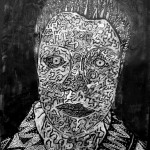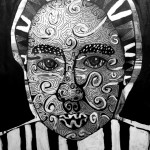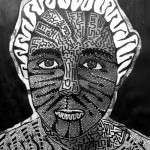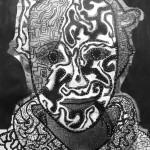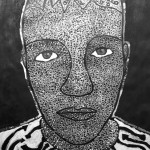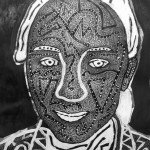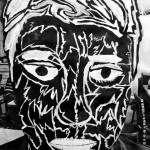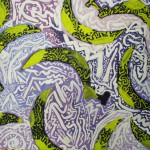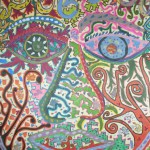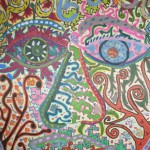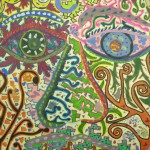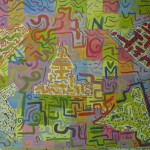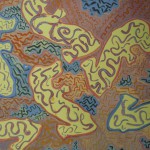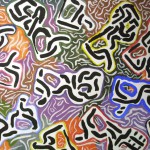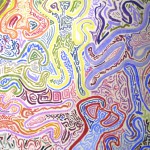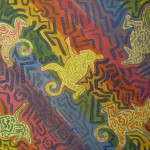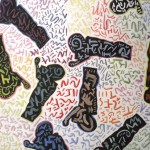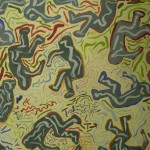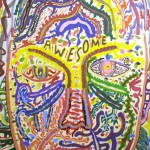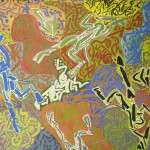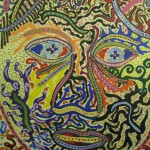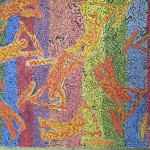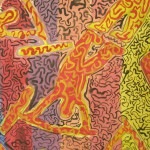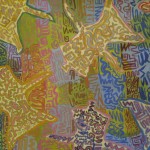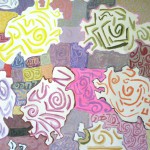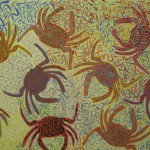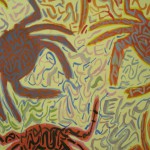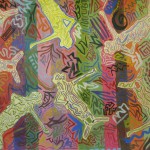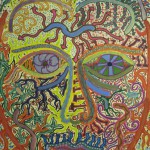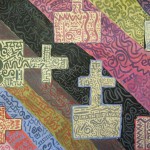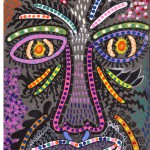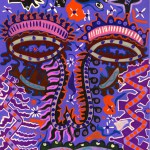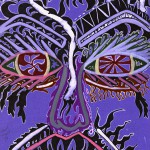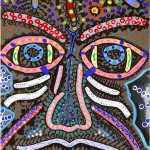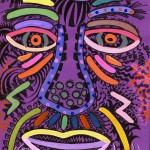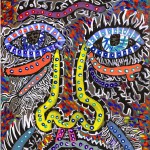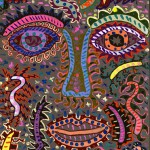
Categories
- Curriculum: Art | Science | Social Studies
- Age/Grade: Elementary 3 | Middle School | Above 14
- Subject: Drawing | Painting | Exhibition
- Materials: Pencils | Paint | Markers
- Institution: Spring Branch Middle School
- Location: Houston, Texas
- Duration: 3 - 7 Classes
Description
Inspired by both Haring's line and the artwork of the indigenous people of Australia, Aborigines, the students from this school in Texas created distinctly patterned portraits using markers and paint.
Objective
Students will learn about Keith Haring's lines and the art of the Aborigines.
Students will practice fundamental elements of art- Line, Symmetry, Contrast, Balance, Color Tints & Shades...
Students will learn how to draw a face and facial features, developing an awareness of proportion and spacial symmetry.
Resources
Slides of Australian works of art
Keith Haring Books
haringkids.com
Photography book called "One" by Ken Ohara
Materials
12" x 18" Colored construction paper
Pencils
Permanent markers
Tempera paint
Palettes (try using Styrofoam meat trays)
Brushes of different sizes
Buckets of water & paper towels
Procedure
CLASS 1
Using Photos from Ohara's book, children will draw a "realistic" large face in pencil. (Also, try this- Facial Proportions Ditto). Remind students to focus on spacial symmetry, dimension, and proportion. Give students unlimited paper to practice this process as it takes some time to grasp.
CLASS 2
Once students feel comfortable depicting a face, hand out large sheets of colored construction paper for their final portrait drawing. Have them draw lightly in pencil so that they can erase easily and so that the paint will be sure to cover the imprints. Once the features are drawn, give students the opportunity to include additional textures and lines. Discuss the different kinds of lines seen in aboriginal art- dots, squiggles, straight lines, curves...
CLASS 3
Set up paint and discuss color mixing. By this point, students should be familiar with mixing and the basics of color theory, although some students may need a refresher course. If so, go over primary colors and how they mix into secondary colors, and, as always, encourage students to mix ALL of their own colors. Try giving them a scrap piece of paper first to explore color mixing and line/brush qualities- using a dry brush and then using a very wet brush. Using a thick brush, and then a thin one. Painting one flat color and then when that dries, painting small details in different colors over it. Fast strokes and slow, calculated strokes...
CLASS 4
Now that students feel comfortable mixing colors, exploring brush techniques and line quality, details and large scale color, and hand out their portrait drawings on colored construction paper and put out the paint and painting supplies. Have them begin their portrait painting with the largest spaces of background color first (hand out only large brushes at first). Then, have students outline the face with thick lines of color that are mixed on their palette and let dry. Next, outline the painted colors with dark lines of marker. Make the marker lines grow with a texture or extension out from the outline. Be creative with your creation of new lines.
Finally, add more paint around, out from, and connected to the marker lines using a small brush.
CLASS 5
Have students stand back from the work- maybe have a classmate hold it up and the artist can stand across the room looking at the work from a distance, or hang them around the room or on the chalkboard. Ask students to search for places they see that they might like to change or develop more. Give them the opportunity to complete their work.
CLASS 6
Hang an exhibit in the hallway- include reproductions of some of the work that was used to inspire this project!!
Questions
What did you learn about faces from this project?
What did you learn about Keith Haring's work>
What did you learn about the art of the Aborigines?
Do faces look different to you now that you know how to draw them? Why is that?
How is it different to see your work up close as compared to far away? What sort of qualities stand out in each instance?
What was your favorite part of this project?
Extensions
UPDATED NOTE FROM THE AUTHOR:
"The 'Big Face Portraits' is what we call the 'Exploding Line Lesson' that was originally inspired by Haring. A thick tinted line is outlined and then pulled out into the negative space, like a growing plant or fingers. After all these years, Haring's spirit still touches the lives of children."
